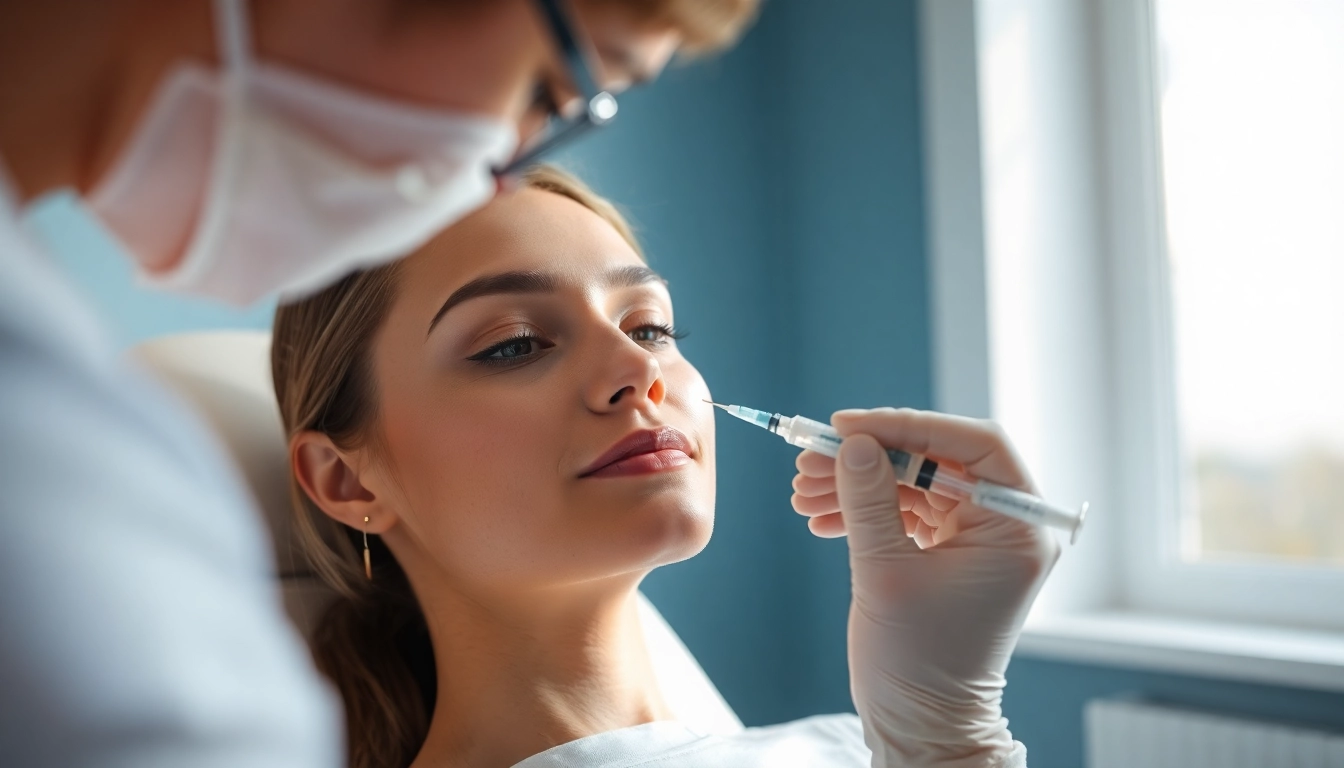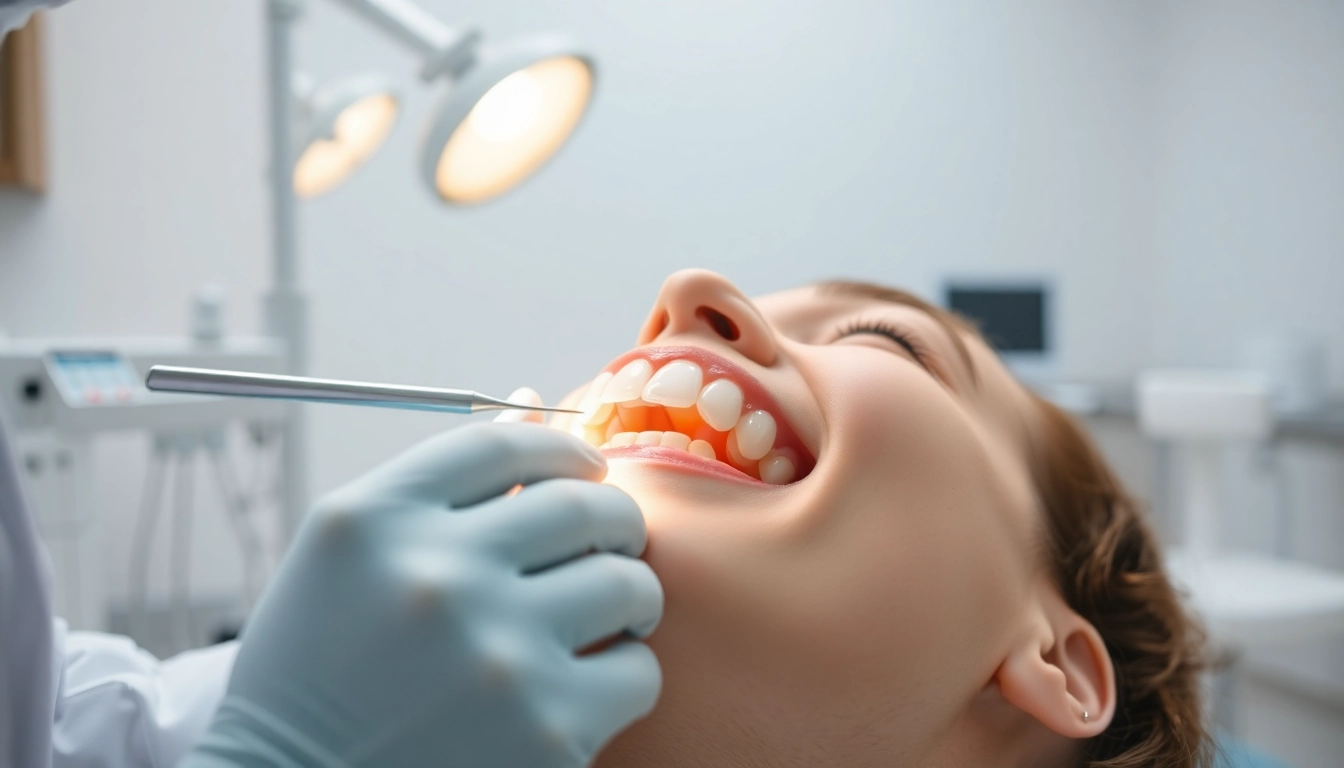Understanding Chin Dermal Filler
What is Chin Dermal Filler?
Chin dermal filler is an injectable treatment designed to enhance the chin’s appearance or correct asymmetry. Made from biocompatible substances such as hyaluronic acid or calcium hydroxylapatite, these fillers provide volume and structure. When properly administered, chin dermal fillers can help balance facial features, creating a more aesthetically pleasing profile. Patients seeking to rejuvenate their chin area will find that this treatment can produce significant improvements with minimal downtime. Many individuals have found success with chin dermal filler for contouring and enhancing their facial symmetry.
Types of Chin Dermal Filler Available
Various types of chin dermal fillers cater to different aesthetic goals and patient needs. Here are the most common types:
- Hyaluronic Acid Fillers: These are the most popular dermal fillers due to their safety profile and reversibility. Products such as Juvederm and Restylane fall into this category, known for providing natural-looking results.
- Calcium Hydroxyapatite Fillers: This type, like Radiesse, is thicker and creates more volume. It not only provides immediate results but also stimulates collagen production over time.
- Poly-L-lactic Acid Fillers: Such fillers, such as Sculptra, work gradually over several sessions to rebuild lost collagen, making them suitable for patients looking for a longer-term solution.
- Fat Grafting: Although not a filler in the traditional sense, fat grafting involves harvesting fat from another body area and injecting it into the chin. This method offers a semi-permanent solution with very natural results.
How Chin Dermal Filler Works
The primary mechanism of chin dermal fillers involves injecting the chosen substance into the targeted areas of the chin. Once injected, fillers occupy space beneath the skin, providing volume, correcting contours, and enhancing the overall facial aesthetic. Depending on the type, the results may be immediate or develop gradually as the body adjusts and reacts to the injected material. Hyaluronic acid fillers, for instance, attract moisture, enhancing thickness and hydration, while calcium hydroxylapatite encourages collagen synthesis, providing longer-lasting results. The key to successful outcomes lies in the injector’s expertise, ensuring that the filler is applied in a way that harmonizes with the surrounding structures of the face.
Benefits of Chin Dermal Filler
Boosting Facial Symmetry
Facial symmetry plays a crucial role in perceived attractiveness. Chin dermal fillers can effectively correct asymmetries, giving a balanced and appealing profile. A well-defined chin can create a more harmonious relationship with other facial features, such as the nose and cheekbones. For individuals whose chins are receding or poorly defined, adding volume through fillers can significantly enhance their facial aesthetics.
Enhancing Jawline Definition
In recent years, there has been a growing trend towards well-defined jawlines for both men and women. Chin dermal filler treatments can improve jawline definition by adding contour and volume. For many patients, enhancing the jawline translates to a more youthful and fit appearance. This added definition results from strategically placing fillers along the chin and lower jaw to create sharp lines that frame the face attractively.
Long-lasting Results Compared to Other Treatments
When compared to temporary makeup or even some non-invasive skin treatments, chin dermal fillers offer relatively longer-lasting results. While results can vary based on the specific filler used and individual metabolism, many users enjoy effects lasting from six months to two years. This longevity gives patients ample time to experience their enhanced appearance without requiring frequent touch-ups, making it a cost-effective solution in the long run.
Considerations Before Getting Chin Dermal Filler
Consultation with a Qualified Specialist
Before undergoing any dermal filler treatment, it’s imperative to have a thorough consultation with a qualified specialist. During this initial meeting, patients can discuss their goals, medical history, and any concerns. An experienced provider will evaluate the patient’s facial anatomy and offer tailored recommendations. This step is vital to ensure safety and achieve desired outcomes effectively.
Understanding Potential Risks and Side Effects
Like any cosmetic procedure, chin dermal fillers come with potential risks and side effects. Common side effects include swelling, bruising, and temporary discomfort at the injection site. Rarely, more serious complications like allergic reactions or vascular occlusion can occur. It’s essential for patients to weigh these potential risks against the benefits while having candid discussions with their specialists about what to expect.
Who is a Good Candidate for Chin Dermal Filler?
Ideal candidates for chin dermal fillers typically include healthy adults looking to improve their facial appearance without invasive surgery. Individuals with realistic expectations, stable emotional and physical health, and a desire for facial symmetry often make the best candidates. However, those with certain conditions like bleeding disorders or autoimmune diseases may not qualify for this treatment, making it critical to disclose complete health information during the consultation.
Post-Treatment Care for Chin Dermal Filler
Aftercare Instructions
Proper aftercare is crucial for achieving the best outcomes following chin dermal filler treatments. Patients are usually advised to avoid strenuous exercise, excessive sun exposure, and hot environments for at least 24-48 hours post-treatment to minimize swelling and bruising. Additionally, ice packs can be applied gently to the treated areas to alleviate discomfort and swelling.
Managing Discomfort and Swelling
While many people experience minimal discomfort after chin filler injections, some swelling may occur. Over-the-counter pain medications can be utilized to manage any discomfort. However, patients should avoid blood thinners, such as aspirin or ibuprofen, as they can increase bruising. If excessive pain, prolonged swelling, or other alarming symptoms arise, it is critical to contact the physician promptly.
When to Follow Up with Your Specialist
A follow-up appointment with the treating specialist is often scheduled within two weeks post-treatment. This follow-up allows for an assessment of results, adjustment if necessary, and an opportunity to address any concerns that may have arisen. Continuous communication with the provider is essential in ensuring ongoing satisfaction with the results.
Comparative Insights on Chin Dermal Filler Applications
Chin Dermal Filler vs. Surgical Options
Patients considering chin enhancement often find themselves weighing dermal fillers against surgical options. While surgical options, such as chin implants or reduction surgery, can deliver permanent changes, they come with more significant risks, longer recovery times, and higher costs. Chin dermal fillers, on the other hand, offer less invasive, more gradual transformations that can be reversed if desired, making them appealing for many individuals.
Case Studies of Successful Chin Dermal Filler Treatments
Numerous case studies highlight the success rates of chin dermal filler treatments. For example, a study tracking patients over six months revealed that 90% reported satisfaction with their results, with participants expressing marked improvements in their facial aesthetics and increased confidence. A secondary study focusing on older adults demonstrated that chin fillers effectively reduced jowls and rejuvenated facial appearance with minimal downtime. Such cases underscore the effectiveness and adaptability of chin filler treatments.
The Future of Chin Dermal Filler Treatments
As the field of aesthetic medicine continues to evolve, innovations in chin dermal filler formulations and delivery techniques are anticipated. Research into biocompatible, long-lasting materials promises to provide patients with even more natural-looking results, while advancements in injection technologies may minimize both discomfort and recovery time. Furthermore, greater understanding of individual facial anatomy will allow practitioners to fine-tune treatments more precisely, tailoring enhancements to satisfy unique facial structures and aesthetic goals.



